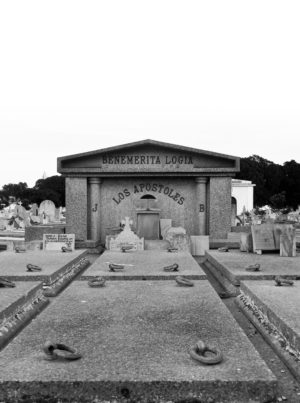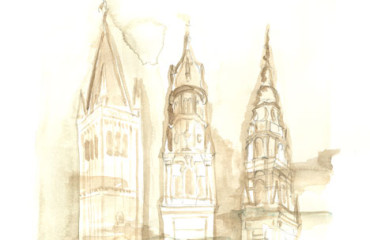
by Luigi Alfieri
Cuba is the island of magic, black or white does not matter. From Africa, from Spain, from the neighboring United States esoteric rites of all kinds have spread in the Caribe, surrounded by secrecy and mystery. Beside to the official religion of the whites, in the world of blacks grew Santeria, the Spanish name of the Florida voodoo or Brazilian Condomblé. A fusion of African animism and icons of Catholicism, a trick of slaves to survive the spirits of the forest, reembodying them in the saints of Rome and praying for them to church. Still, a complex and initiation system rich of dark areas for the non-practicing, fertile in magic rituals, in obscure words and formulas, in esoteric dances.
Even more mysterious of Santeria is Abakua, a real secret society, feared and respected, inaccessible to non-affiliates who between them speak a language incomprehensible to profane. A little sect, a bit fraternity, a little mutual aid society, Abakua – that has as power symbol a leopard, night dweller – was born in Africa within the tribe that captured, in forests and savannahs, slaves to sell to merchants. In turn, some members of the fraternity – from which women are rigorously excluded – were captured by whites and brought to the island. Slowly, in the nineteenth century, the company was reconstituted in Cuba, becoming more powerful and mysterious. The whispers stolen the few who dare to talk about the sect tell of an organization also infiltrated in the ganglia of the society close to the supreme power, the ones of the army and the party.
More open, less tied to legends and fears, is the presence in the island of masonry that in the Caribbean is not cloaked in the secrecy that surrounds it in the South of Europe, at least in its epidermal manifestations. In the street of Havana and Santiago, there are small buildings that openly present themselves as seats of the lodges. In the heart of the Capital, there is a palace – almost a skyscraper – of glass and steel, surmounted by a large compass, and the driver, with a whisper, suggests, “It is the mother lodge of Cuba. Here, Masons command much”.
Since cemeteries are the perfect mirror of the livings’ civilization, the real substance of the fraternity in the island is perceived by visiting the monumental one in Havana. It is one of the most beautiful in the world, rich in Carrara marble, wonderful statues, impressive tombs, which falls the task of celebrating the greatness of the illustrious families of the island composed of owners of sugar mills, distilleries, crops and tobacco factories, traders, Spanish nobles. Here, in the most beautiful and scenic avenue, there is the row of white mausoleums of the lodges. Built with stones and decorated with even more wealth, they are within walking distance of monuments dedicated to the victims of Castro revolution, heroes of communism, martyrs of the work, in a mix that surprises and ignites strange fantasies. On the gables, we read “Logia Estrada Palma”, “Logia Hijos de Colombo”, “Logia Fraternidad Martí”, “Praise Logia Los Apostolese”, and abound compasses, square rulers, handshakes, and emblematic letters. On a stele, the names of deceased members, names that have shaped the history of the island before and after Castro revolution, to the point that some mausoleums were built in the sixties, a good while after the seizure of power by Fidel. And then it is natural to ask about the relationship between the party-state and secret associations. Certainly there has been great tolerance. And respect. Maybe something more. Quien sabe?
Cover: the monumental cemetery in L’Avana, detail of a tomb
 English
English  Italiano
Italiano 



